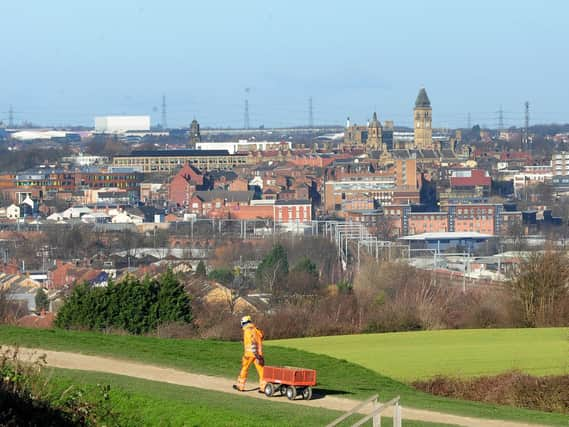687 Jedi Knights: We take a look back at Wakefield's 2011 Census


The Census is a questionnaire sent out by the government every ten years to gather information about people and households in England and Wales.
Held every decade since 1801, the Census collects statistics on age, gender, and ethnicity, and is used to develop government policies, run public services and allocate funding.
Advertisement
Hide AdAdvertisement
Hide AdDr Matt Badcock, head of sociology at Leeds Beckett University and senior fellow of the Higher Education Academy, said: “The census has been going since 1801 and is important for all areas of society.
“The census this year is different as it is the first digital-first census where people will be encouraged to fill the survey out online, from laptops or mobile phones. The option will be there for people to fill the paper version out and return them in the post, but the government is pushing for it to be filled out online.
“The census is used for a variety of things. The government and local council use the data collected to allocate funds and analyse trends. The census can determine when and where new schools or hospitals are built, as well as fund local transport systems. Businesses, charities, academics, and students also use the census for research and information on topics in areas.
“This census is special because there is talks that this might be the last one and the statistics will be generated in other areas, through information from medical records and car tax.”
2021
What is the census, and why do I have to complete it?
Advertisement
Hide AdAdvertisement
Hide AdThe census is a detailed questionnaire which gathers information about the population. It collects details about every resident of each household in the UK. The data collected is used to help inform government policies, run public services, and allocate funding. It is a legal requirement to complete the census; those who do not risk a criminal record, and a fine of £1,000.
How will this census be different than previous ones?
The census is carried out every 10 years, with questions altered slightly each time. The 2001 census saw the removal of a question about outside toilets, and this year the census will not ask about how many rooms there are in your house. New questions on the census will ask your sexual orientation, with a voluntary option for gender, as well as about any veterans in the house.
How can I take part in the census? Does it have to be online?
Though people are being encouraged to fill out the census online this year, paper forms will be available on request. Letters with unique online access codes have been delivered to households across the district this month, and Wakefield Council are offering Covid-secure appointments with dedicated staff at libraries for those who require assistance.
2011
What did we learn about people in Wakefield?
Advertisement
Hide AdAdvertisement
Hide AdThe population in Wakefield jumped by 10,665 people between 2001 and 2011, bringing the total population to 325,837. Women and girls accounted for 51 per cent of Wakefield’s population, with men and boys accounting for the other 49 per cent, in line with national figures. In 2021, the population is expected to cross 350,000 for the first time.
What does the census tell us about religion in Wakefield?
According to the 2011 census, 66 per cent of people in the Wakefield district identified as Christian, down from 78 per cent a decade earlier. Meanwhile, 24 per cent identified as being non-religious and two per cent identified as Muslim. A further 687 people identified as being a Jedi Knight, and 37 people said they believed in heavy metal.
What percentage of people in Wakefield are born in England?
In 2011, almost 93 per cent of Wakefield residents were born in England, with 1.2 per cent of people being born in Scotland, followed by 0.6 per cent of people born in Pakistan and 0.4 per cent born in Wales. The district’s ethnic minority population grew from 3.3 per cent to 7.2 per cent between 2001 and 2011, though remained much lower than the national average.
Which areas of the district are the most populous?
In 2011, the South Elmsall and South Kirkby ward was the most populous, with 17,624 residents. This was closely followed by Wakefield Rural, with a population of 17,302. Meanwhile, Wakefield South and Knottingley had the least inhabitants, with 13,556 and 13,710 residents respectively. The 2021 census will seek to update these figures.
Do some areas of the district have an aging population?
Advertisement
Hide AdAdvertisement
Hide AdAt the time of the 2011 census, more than 55,100 people in Wakefield were aged 65 or over, up 6,500 since 2001. The average age of residents in the district was 40, with the Wakefield East ward reporting the lowest average age at 37. Pontefract North and Wrenthorpe and Outwood East, both had an average age of 43.
Do more people rent or own their homes in Wakefield?
The 2011 census revealed a sharp spike in the number of people privately renting their homes, up from 6 per cent to 11 per cent. This equates to 8,386 more private rented households in the 10 years, roughly in line with the national average. Meanwhile, the number of people who own or mortgage a home fell by 1 percent, and those who rent from a social landlord fell by 4 per cent.